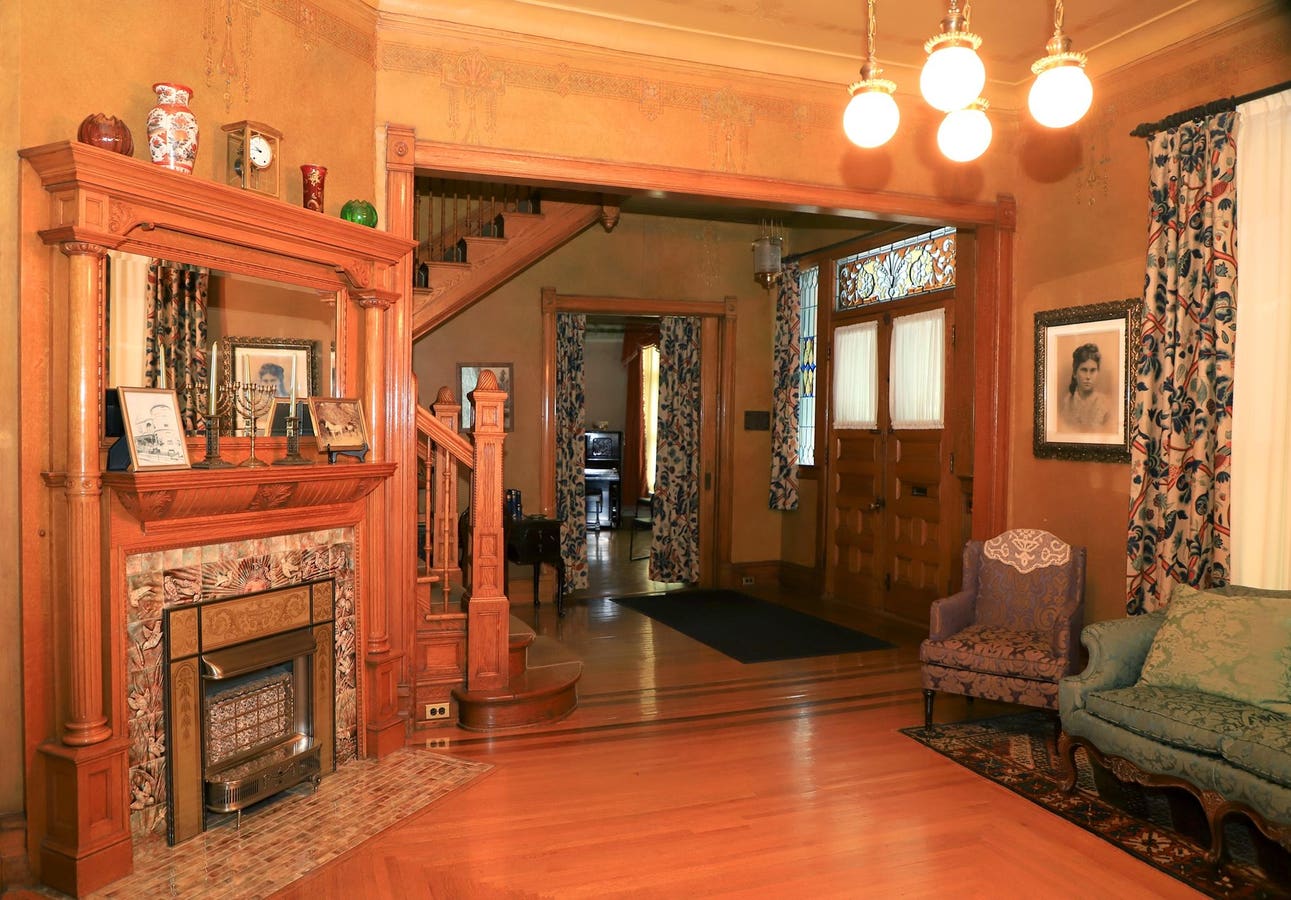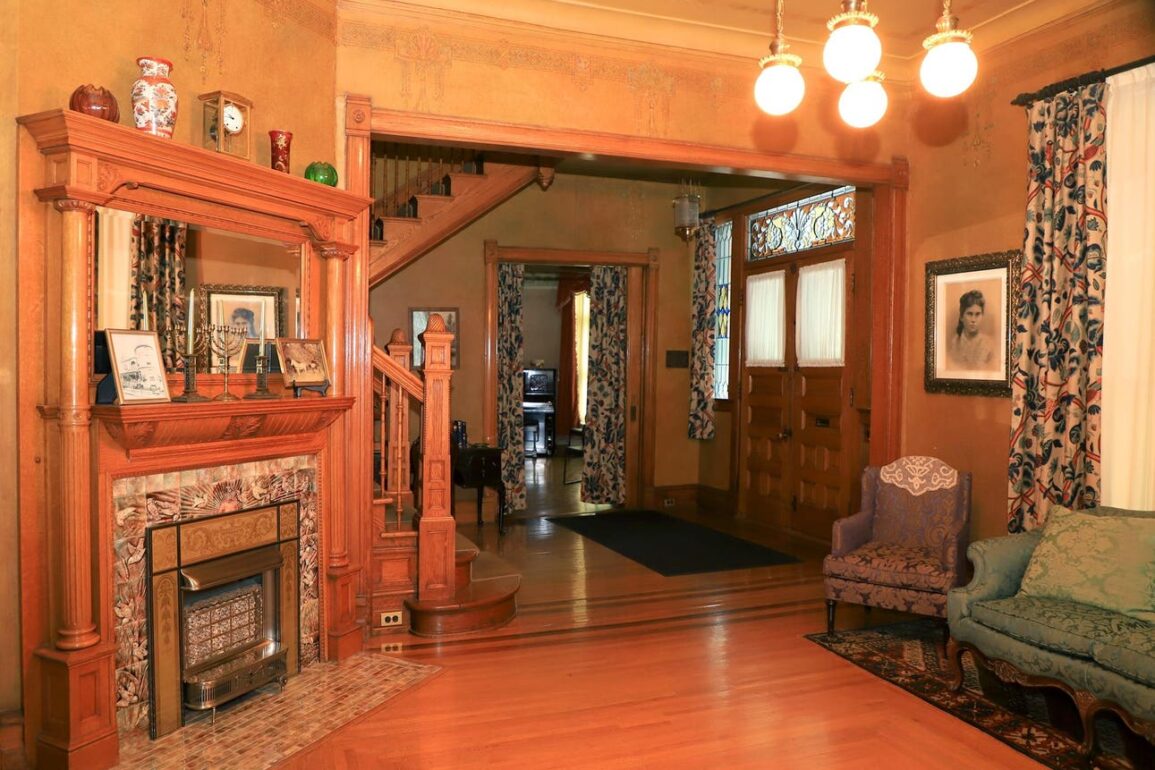
As revivals of quintessential Old West towns go, that of Deadwoood, South Dakota has been as robust as they get, with the Black Hills star buzzing with activity today. Some of what attracts 2.5 million visitors a year surely comes through the recent popularity of a period TV series, but the important key is that city leaders several decades ago decided to rescue a rich architectural heritage from decline.
With the newly-renovated Deadwood Mountain Grand casino hotel as your base (see recent post here), the whole town lies just minutes away. And whether you enjoy Deadwood’s copious casino offerings or not, it’s the revenue from the gaming industry that you can largely thank for preserving one of the finest collections of buildings in the West, and for which the city’s Historic Preservation Office wouldn’t have the funds to protect its National Historic Landmark District.
The Deadwood Mountain Grand’s original huge processing plant (center) is a link to the hotel’s roots … [+]
Credit: City of Deadwood Historic Preservation Commission, Copy and Reuse Restrictions Apply. www.cityofdeadwood.com
To discover any small town, starting small is the logical way to go. Look out for the well-designed and super informative historic plaques placed all around town. Just across the street from the Deadwood Mountain Grand, you have to look closely to realize that Deadwood’s handsome old brick Railroad Depot is now a visitors center with some fine little exhibitions on the role of trains in the mining industry and on the growth of the town. Don’t miss the case that holds copies of early-20th-century canned goods with their gorgeous colorful labels of peas and tomatoes and cherries and pears that put our contemporary designs to shame.
Deadwood’s Adams House is so perfectly preserved it looks like the Adams family never left a century … [+]
Credit: Deadwood History, Inc.
Founded in 1930 just next to the depot, the three-story Adams Museum owes its existence to W.E. Adams whose influence as businessman and mayor on early Deadwood was actually far greater than all those colorful legends—we’re talking about you, Wild Bill Hickok and Calamity Jane. Eclecticism is the order of the day here, from the 7-troy-ounce gold nugget discovered by a tiny bearded Welsh-born character whom they called Potato Creek Johnny to the five-ton locomotive from mining days that had to be brought in by taking out a wall. The basement displays the skeleton of a rare marine reptile called a plesiosaur found nearby in the 1930s. Among some truly curious small historic figurines upstairs behind glass, 96 wooden women and one man were carved by a local in the 1930s and depicted at a nudist colony.
A new addition to the town’s historic sites, the Deadwood Brothel Museum recreates a century of the … [+]
Credit: Deadwood History, Inc.
In the part of town called the Presidential District for its historically finer homes, the gorgeous Queen Anne-style Adams House is surely among the most superbly preserved late 19th-century homes you’ll ever find. Modern for its day with indoor plumbing, electricity, and a telephone, it was built by the founder of the city’s early premier Franklin Hotel, and bought not long after by Adams. Upon his death, his much younger widow left it untouched for more than half a century. The house’s original stained-glass windows, oak floors, parlor china and many more details make it seem as if Adams were to walk in at any moment.
On the other spectrum of civic respectability, The Brothel Deadwood is a fine new addition to the city’s historic scene. A number of its rooms seen on guided tour have been recreated to show period design and fashion starting from Deadwood’s early rowdy days and into the 20th century, right up until the colorful occupation faded from Main Street in 1980.
On a corner of the next Main Street block stands one of Deadwood’s many casino sports bars. You can’t miss Mustang Sally’s for its unmistakable Art Deco form and façade that is a total anomaly in a town of late 19th-century stone buildings. In the 1930s, it housed a car dealership and later gas station.
Said to be the oldest bar in the state, the Buffalo Bodega opened in the 1870s and gets its name from the owner’s friendship with Buffalo Bill. A long old wooden bar on one side and a steakhouse on the other are filled with decor of old beer and marketing signs and wagon wheels, while the ample street-facing space and upstairs patio is the kind of place to hang for hours.
As a good break from lots of walking, the doubledecker bus Boot Hill Tour takes you through more of historical Deadwood. The one-hour ride goes up to the wooded hillside Mount Moriah cemetery where several legends like Wild Bill Hickok and Calamity Jane are buried. A bronze statue of Bill looks curiously more 1970s rock star than 1870s frontiersman.
Another of the civic institutions run by Deadwood History, Inc., the Days of ’76 Museum that lies a bit on the edge of town shows period firearms, wagons and carriages, and all the goods that made the West what it was.
Deadwood’s Days of ’76 Museum is filled with historic Old West items.
Credit: Deadwood History, Inc.
As a major tourist destination, Deadwood is not lacking for finer food options. For a nice retreat from the hullabaloo along Deadwood’s Main Street, the basement of the historic Franklin Hotel is home to the Legends Steakhouse, also known as a prime breakfast spot to get your day going.
A northern Italian steakhouse might not have been on your list of Deadwood expectations. In a series of warren like 19th-century dining rooms that were formerly apartments, the Deadwood Social Club is always packed. It’s also conveniently located above the famously raucous Saloon #10 bar.
Said bar is said to be where Wild Bill Hickok was shot dead. That counts among conflicting similar bar names on Main Street and conflicting historic evidence. It’s almost as if they should draw for the truth.
This post was originally published on this site be sure to check out more of their content.









